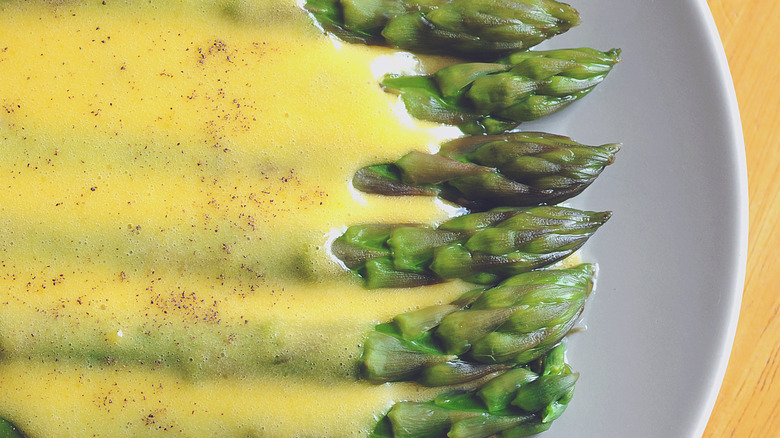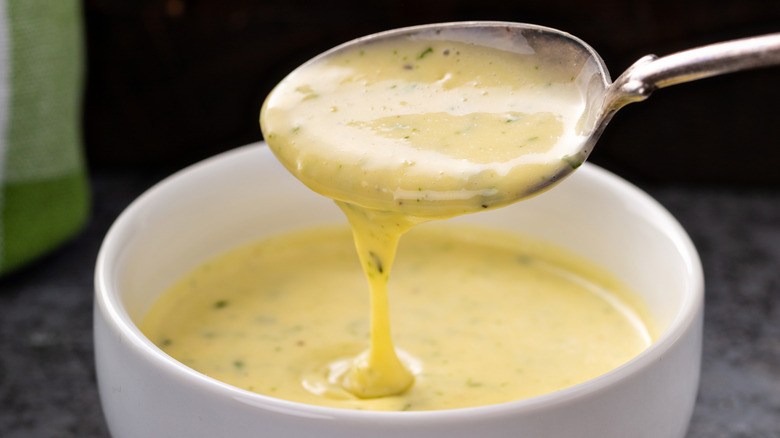Hollandaise Vs. Béarnaise: What's The Difference?
Most of us have tasted a variety of sauces in our life, from ketchup on a thick, juicy burger to mayonnaise for dunking greasy french fries to salty soy sauce for dipping a delectable piece of sushi. And sauce connoisseurs will surely know a thing or two about the famous five French mother sauces, especially if they're fans of eggs Benedict served with a dollop of tasty hollandaise sauce on top. Michelin Guide reports that the five mother sauces originally consisted of only four sauces, created by Antonin Careme in the 19th century. However, Auguste Escoffier chucked out one Careme's sauces years later and added two new sauces, completing the five French mother sauces we know and love today.
They can be divided into two groups: white sauces and brown sauces. The brown sauces are sauce Espagnole and sauce tomat, while the white ones are béchamel, velouté, and hollandaise. And if you love hollandaise as much as we do, you might have also heard of sauce Béarnaise because it's actually "a variation on hollandaise" that was created by chef Jules Colette in Paris in the 1830s. The sauce was aptly named in honor of the French province of Béarn (via Our Everyday Life). However, béarnaise and hollandaise sauces are pretty much alike, so it can be easy to confuse them. Luckily, we know the real difference between the two sauces.
Béarnaise sauce is an evolution of hollandaise, with added tarragon and shallots
MasterClass reports that hollandaise sauce consists of egg yolk "emulsified with unsalted butter and acid." On the other hand, Béarnaise sauce uses all the same ingredients and builds on them with added shallots and tarragon. Chef and cookbook author Thomas Keller provided his recipe for MasterClass in which he reduced the hollandaise and added heavy cream, egg yolks, peppercorns, white wine, vinegar, clarified butter, tarragon, and shallots to make a Béarnaise. Keller recommends serving the sauce warm.
The main difference between the two is that Béarnaise uses white wine vinegar for acidity, while hollandaise is usually made with lemon juice. Both sauces are instantly recognizable for their pale yellow color and smooth, creamy consistency. But each one is typically used to flavor different dishes and ingredients. For example, hollandaise is often added to eggs Benedict and steamed asparagus, and it goes exceptionally well with poached fish. Béarnaise, on the other hand, is most often served with grilled meat such as steaks. However, it also goes well with grilled fish (per The Kitchn).
And if you need even more inspiration to make these sauces, what better way to start cooking than being enticed by a trio of celebrities? On YouTube, you can watch a classic video of Julia Child making Béarnaise sauce with Martha Stewart and celebrated chef Jacques Pepin and possibly pick up on more tips and tricks while watching.

